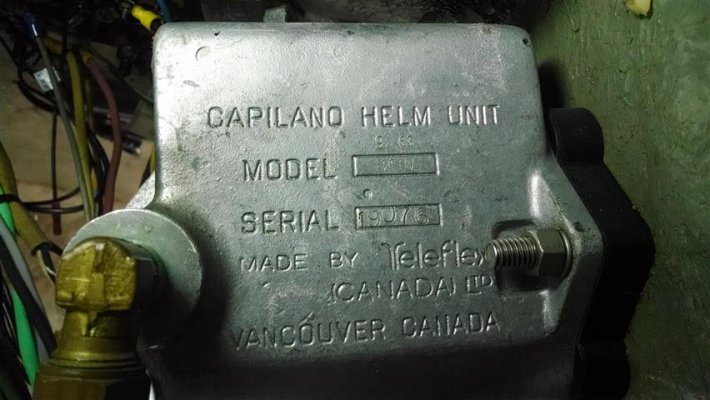Rduval
Veteran Member
- Joined
- May 11, 2014
- Messages
- 94
- Location
- Canada
- Vessel Name
- Bonaventure
- Vessel Make
- Cheer Men PT41 Europa
Rduval, You didn't happen to note the model number stamped into the side of your helms did you? I'm still baffled why your helms supposedly have check valves yet you have a uniflow. When you took the fittings off the upper helm could you actually see the check balls in there?
They are model 250V's and unfortunately, because of the location I couldn't get a eyeball into the checkball passage to actually see what was actually in there (which I really would have liked to do). I would have had to remove the wheel and take the whole unit from the flybridge to do it so I opted to just try to get it working with the flushing and refilling which did the trick.
BTW, I know from the pic it appears I could look straight in but I took the pic with my smartphone flat against the bulkhead. My head "ain't that small" lol
Attachments
Last edited:

